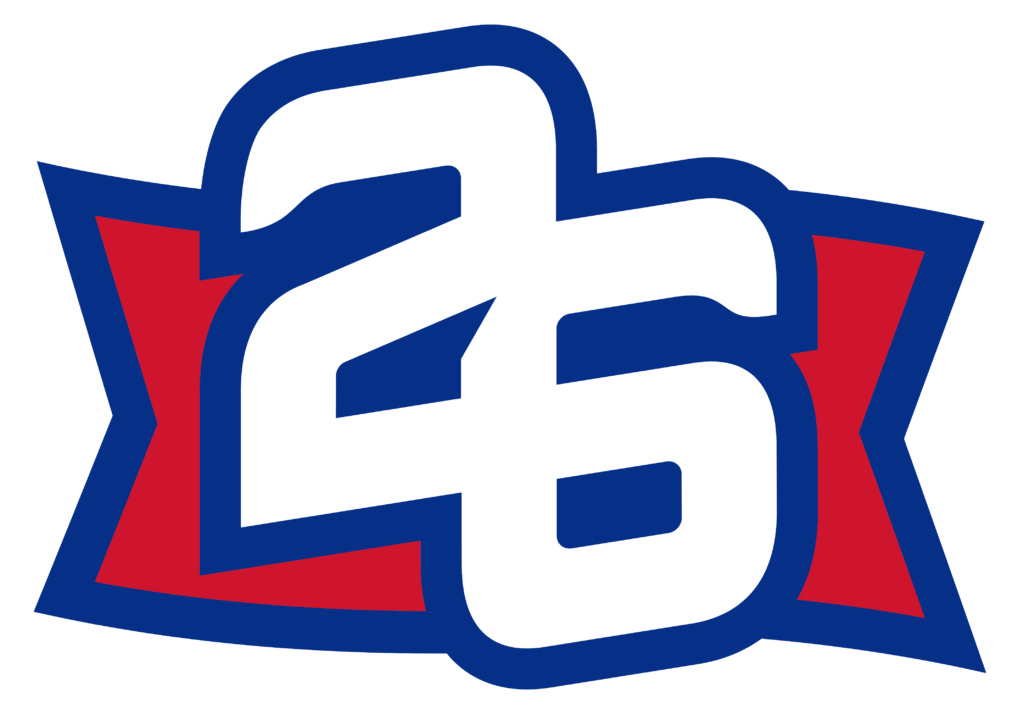The 5 previous articles in this series are below
The summaries of those articles include:
- Buffalo has room to keep up to 13 rookies, and while it is not reasonable for a superbowl team to carry this many younger players, there are position groups which have less depth, need cost control, and make the overall team better.
- Buffalo has approximately 26 players to add between now and the beginning of training camp.
- Good teams tend to have around 15-22 players on team for four or more years, the remaining 31-36 players are a combination of draft picks on their first contract and players acquired from other teams which tend to be on rosters less than three seasons
- The Bills have only 26 of their own draft picks on the roster, which is in the bottom 50% of the league. Draft picks provide cost control at a position for 4 seasons.
- The position groups which should be targeted based on this systems analysis of the positions include:
- CB (1 or 2 open roster spots on 53 player roster)
- RB (cost control needed going forward+talent upgrade)
- Offensive line (1-3 open roster spots on 53 player roster, possible cost control)
- Tight end (cost control needed going forward)
- Punter (talent upgrade+cost control needed going forward)
- Defensive line (cost control needed after this season)
- Linebacker (1-4 open roster spots, cost control needed after this season)
- Safety (cost control at deepest position on team)
- Backup QB (cost control needed)
If the readers do not know, I am a system engineer by trade. There is a concept called systems thinking, which is not the same way other engineers think or solve problems. Much of the approach I am taking is demonstrating systems thinking for those who have not been trained to view problems.
Systems thinking is a way to make 1+1=3. A system exists when it achieves more than the sum of its parts. Here is a great visual example
This is an hourglass. It can be glass, wood or another material.
This is sand
When you look at either, you see an object. When you combine them (an hourglass with sand) you get “time”. You cannot get time from sand, you cannot get time from an hourglass, you can only get a timer when the sand is put in the hourglass and used in a specific way. That is the mathematical definition of a system.
A more complicated example is an airplane. A person cannot fly on a wing, a wing cannot fly if it’s not propelled by an engine, and an engine cannot fly if it’s not attached to the fuselage or wing. Each aspect of the system is putting requirements on the other portions of the system.
One last system point, a system is architected, it is not “designed”. The architect has to plan how the whole system will come together (there is more than one right way to architect a system- some planes have engines on the fuselage, some have engines on the wing, some have engines on the fuselage and wing, these are architecture decisions. In this sense, Brandon Beane would be the architect of the system (team) and how the team is constructed.
For an NFL franchise, the team is the system. The draft is one portion of how to construct the team, but there is also free agency, trades, undrafted free agents and more. The goal is to compete for a superbowl (and win the superbowl). So as analysis and metrics have been presented, those show where roster has needs, and the draft is just one way to address the needs, it is NOT the only way to address the needs.
So applying a level of systems thinking to the Buffalo roster and the push for the Super Bowl, the goal is to win now, and make sure the roster is improving at key positions to win in 2022 and provide the help Brandon Beane is using to architect the team.
Brandon Beane, in my opinion, prefers to use free agency to improve team (short term) as opposed to the draft. This is evidenced by Buffalo being in the bottom 50% of the league with draft picks which have been on team four plus seasons. It will take 3-4 years to flip this statistic and put Buffalo among leaders in retaining draft picks, but this requirement is an attribute- it describes the team, it doesn’t define how to architect team- if Beane can trade and acquire players through free agency, he has shown each season he will use this technique as opposed to relying on a draft pick to be the 3rd down RB, slot receiver, or trying to draft a defensive tackle and relying on that player if they are not a proven commodity.
So from a system perspective, the draft requirements are
- Make team better
- Address roster weakness at CB
- Address roster weakness at OL
- Make roster better with cost control
- TE
- QB
- RB
- WR
- DL
- Punter
- LB
- OL
- CB
Every draft pick at every position is cost control. The order the requirements are listed are NOT the rounds or order to solve the requirements (no requirement can be isolated from the other- the system needs all requirements met).
Brandon Beane does not have a history of trading down. This draft is deep, especially in rounds 3-5, where I expect many teams to be picking starters at TE, RB and OL well into day 3 of the draft. It is possible to draft 13 players and provide rationale as to why each position (and player) needs competition and could improve the roster.
Consider this theoretical example, and we can review the depth of each position and cost control at the position as well.
Pick 1 Kyler Gordon CB and pick 10 Montaric Brown CB
Gordon would be the third highest paid CB on the list, and Brown would be in middle of list. More importantly, both would add depth to a position room which could be minus two 2021 starters week 1 because of the departure of Levi Wallace and injury to Tre’Davious White.
This assumes White is on the 53 player roster (and not PUP list), both CBs would compete for 2 open roster spots according to my graphic.
Pick 2 LB Leo Chanel and Pick 11 LB Nate Landman.
Both LBs would have cost savings relative to Tyler Matakevich and Andre Smith. Because Matekavich and Smith play significant special teams roles, it would be expected both rookies would have to play most coverage units.
Giles-Harris spent most of 2021 on the practice squad, and neither starter played 17 games last season, so the question would be could Chenal or Landman (or both) start in place of Tremaine Edmunds or Matt Milano when each (inevitably) miss a start because of injury? If yes, then both should make the roster as reserve LBs.
Pick 3 Alec Pierce WR
Pierce would compete with Marquez Stevenson and Isaiah Hodgins for a roster spot. His salary would be a slight cost savings if he beat out Jake Kumerow.
WR is the toughest position room for a mid round or late round draft pick to make the 53 player roster. It is possible Buffalo keeps 7 WR. It is also possible a veteran like Kumerow does not make the team to keep a younger, cost controlled WR with more upside.
Pick 4 Brian Robinson RB
A RB we draft after round 1 provides cost savings to any player we have under contract. In this case Robinson would likely be competing with Zack Moss for a roster spot. Depending on the RB, it is possible the role of 3rd down RB is competition for Duke Johnson. Depends on player style and fit, pre-season injuries and what coaches decide.
Pick 5 Bryan Cook S
Drafting a safety after round 1 provides cost savings for any backup Buffalo keeps on roster. Josh Thomas spent most of 2021 on the practice squad.
Cook would likely replace Jaquan Johnson or Damar Hamlin on the roster, or be the extra defensive back if Tre’Davious White starts the season on PUP.
Pick 7 Neil Farrell Jr., DL (DT)
Defensive line is the most expensive position group on the team. Any draft pick provides significant cost savings if the player is good enough to replace a veteran on the roster. The player to keep an eye on is AJ Epenesa, as his salary relative to playing time is likely disproportionate, so moving on from that salary for a rookie provides reasonable savings.
The defensive lineman in green are the players I project to make the 53 player roster. This is 9 players. If a rookie defensive lineman is drafted, one of the players in green likely is cut, or put on injured list prior to season starting.
Pick 6 and 8 Zach Tom T and Lecitus Smith G
The offensive lineman drafted after round 1 would be a cost savings over every backup OL on the Bills roster. The most cost savings would come if Cody Ford is not on 53 player roster.
According to this graphic, I show one opening for an offensive linemen on the 53 player roster, assuming Cody Ford does not make the team. Buffalo will keep a minimum of 8 OL and likely 9 OL on the 53 player roster. Ike Boettger is likely starting season on PUP as he recovers from a torn achilles tendon suffered in 2021.
A second rookie offensive linemen making the team likely means Buffalo keeps 9 (only 8 spots shown on graphic), Mancz is cut, or a player slated as a starter is injured as pre-season ends.
Pick 9 James Mitchell TE.
A rookie tight end would make less than the top 2 TEs on the list. Buffalo only kept 2 TEs on the active 53 player roster in 2021.
I show an opening for a third TE on the active roster for 2022. This is because I anticipate Buffalo using more 2 TE sets during games, which suggests game day would need a third TE. A rookie would compete with the two veterans listed as off the roster, and TE is one of most difficult positions for rookies to have a large role for. The time it takes to develop a TE is more than one training camp.
Pick 12, Jordan Stout, Punter. Punter was the example initially given for where cost control at position gives Buffalo cost savings over a veteran.
Summary:
Systems thinking suggests if a rookie can save $150k salary at 8 positions (relative to player replacing on roster), that $1.2 million in cost savings is enough to add another veteran to roster, or extend an existing veteran beyond the current length of their contract.
Editor’s babble: We like the way Jim Wickens thinks (systems oriented), and are grateful for his contributions to our blog. You can find Jim on Twitter @cincyplanner.

BuffaloFAMbase.com is sponsored by 26 Shirts
Every Monday, we launch a two-week campaign of a new Buffalo-themed t-shirt design. Every purchase results in a donation to a local family in need. After the campaign ends, the shirt is typically retired. A new design is released, and a new family benefits from your fandom!

